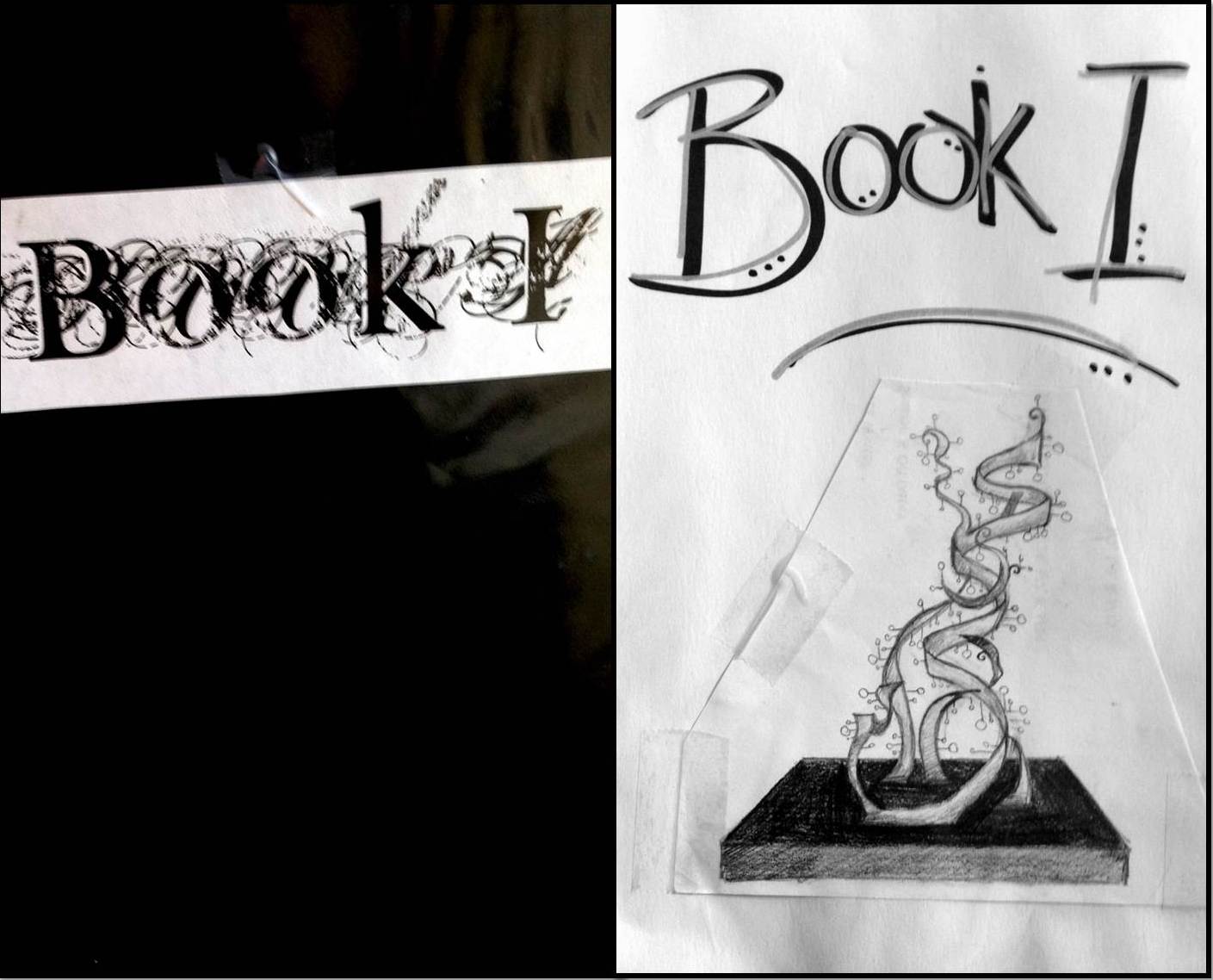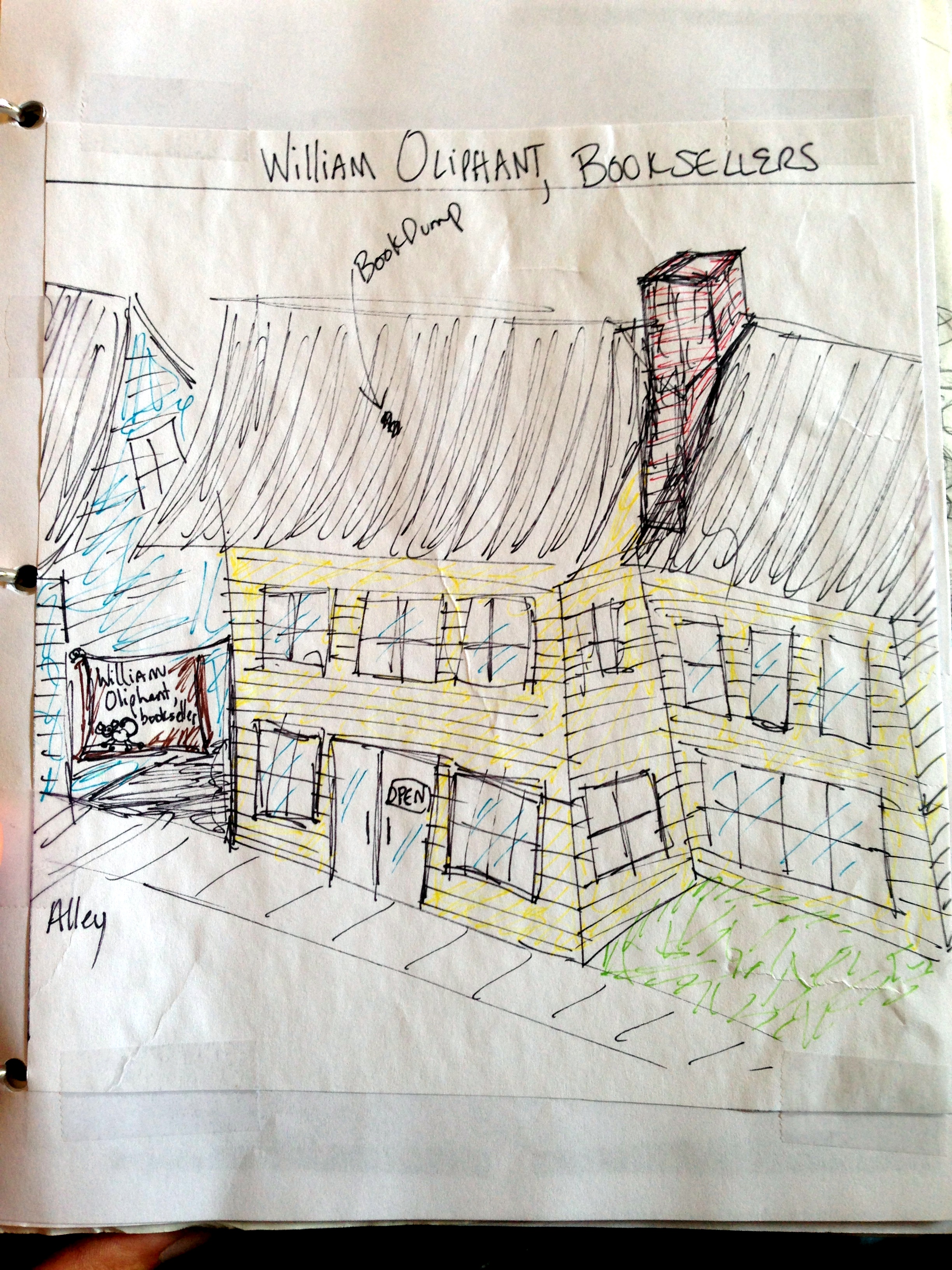I don't write an awfully lot about my scifi novels on my blog, although I probably should. They are my babies--I spent long, hard, laborious hours bringing them into being, and I love them. The truth is, the stories actually only tell part of the story.
If you've read them, you've met my main characters (John and Quin) and a bunch of their friends, you have an idea for how my technology works (Doors that transport you to other places in the universe in a single bound!), and you've gotten a taste of my writing style (hopefully cheerful, light, winding, and getting better with each progressive book).
But the world behind the books is far bigger than that. In my house, I keep binders filled with drawings I've done, character sketches, and more, that depict the various elements of my world. Some of the ideas I've used, and some I haven't, but today I am going to give you a little taste of the other ways in which I "write" my novels.
Writing isn't all about writing, although the actually writing part is probably the most crucial to the process. Writing is also about building ideas, turning something that is not real into something that is real in a sense, and finding away to connect your own heart and mind with your imaginary characters and your imaginary world.
All of the strategies I use to build up my universe also serve as an excellent way to combat writer's block. By drawing or sketching or finding images that represent my world, or by fleshing out details that I wouldn't have thought about within the context of the story, I can often redirect the story I am working on to be more interesting, more detailed, or more fun. It also gives me something to go back to later, when I can't think of an interesting detail or want to flesh out a scene a bit more.
The first thing I like to do are character sketches. I go online and find images of models or random people on the internet, and use them to help me visualize characters. Normally I wouldn't share these with readers (because I want you to imagine each of my characters the way you think they should look), but I will put a couple examples here. These are John and Quin's pages. They don't have a lot of content on them (other characters are filled with writing from top to bottom) because I have a pretty good idea of their personalities and didn't feel like going to the effort to write it all down.
Character sketches help in two ways: they help me flesh out a character, but also help me keep that character consistent across projects.
Another strategy I use is to sketch places. I'm not by any means a brilliant artist, and plenty of sketches have found their way into the trash can, but the goal is to give a general sense of a place. I want my settings to have as much personality as my character, as much as possible.
Here, for example, is Pomegranate City. It is drawn from a description I had written for an old, old draft of The Wounded World. As you can see, the Globe and Ty Gwydr (which has not appeared in a book yet--it's a biodome/greenhouse on the outskirts of the city) are featured prominently in the skyline.
There is also a non-coloured version:
At some point, I will create a map as well, so I can have some consistency in where my characters go and how they move about the city, but it that will require a re-read of all of my novels, so will have to wait until the long, dark, winter.
The Globe, as those of you who have read my novels know, plays a large role in The Lonely Whelk, and makes an appearance in all of my other novels (including the unannounced The Trouble With Tangerines.) The Globe is a government facility that not only monitors and restricts all Door travel and access to new locations, but serves as the home base for technological innovation in their world. The building is huge, and contains everything from boring offices, to interplanetary archaeological storage, to research labs, to an observatory.
This image I actually drew on my wall, back when I had more space. I put up a huge piece of paper that covered the entire wall and did everything from working out confusing plot lines to sketching buildings and faces. When I moved, I cut everything out and put it into my binder.
Magic.
Here are a few more examples of more places. William Oliphant, bookseller, featured prominently in The Clock Winked. Quin's house shows up in most books, but Meriym's house (or the Square house which does not look quite so square in my picture [it's evolved!]) shows up in The Wounded World.
There is a lot of other stuff in my binders. I have everything from scene lists to character lists to sketches of plots that don't really make any sense. I put together a weird fashion show that supposedly happened ("Blowing In The Wind" where all the dresses were built to look like they were perpetually blowing in the wind) and included sketches of all the clothes. There are post-it notes of things to remember, quotes that I think are somehow applicable to characters, situations, and scenes, and even chunks of my novels that will never again see the light of day.
Writer's block sucks, but don't let it get you down! There are other ways to interact with your world--whether it is building a Minecraft/Sims version, drawing things by hand, writing short character sketches or excepts that have nothing to do with your main project, or painting murals of your characters all over your house--that can help you beat it!
After all...











